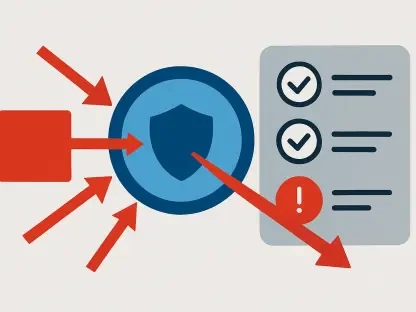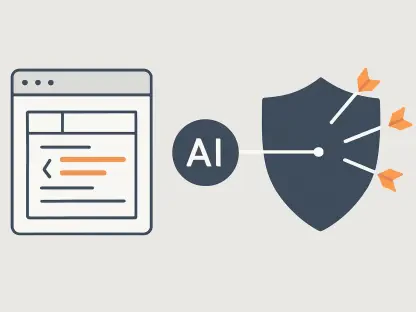Web applications are continuing to evolve at an unprecedented pace, and embracing cutting-edge technologies has become crucial to maintain a competitive edge. Among these innovations, progressive web apps (PWAs) have risen to prominence as a versatile solution that bridges the gap between web and mobile applications. In fact, a recent case study showed that after an organization installed PWA, they saw an increase in their organic traffic of over 119%. That said, in this article, we’ll delve into the realm of PWAs and examine their fundamental characteristics. We’ll also discuss ten compelling reasons why integrating this software into your digital strategy isn’t just beneficial, but essential.
What Is a PWA?
PWAs herald a new era in the evolution of web development, representing a symbiosis between the finest attributes of websites and native apps. These applications are designed to provide a holistic user experience that erases the boundaries between the web and app domains.
With PWAs, users are granted the convenience of instantaneous content access through web browsers, while also reaping the immersive and responsive benefits typically associated with mobile apps. This fusion of attributes from both worlds offers a fresh perspective on how users interact with digital content, catering to their demands for seamlessness, speed, and interactivity.
Examples of Progressive Web Applications in Action
To grasp the tangible impact of PWAs, let’s delve into a selection of successful implementations across industries:
- Twitter Lite
By embracing a PWA approach, Twitter effectively enhanced the user experience, substantially reducing load times. This optimization ensured that even consumers grappling with sluggish networks could engage seamlessly, ultimately leading to heightened engagement and prolonged session durations.
- Flipkart
The PWA iteration of Flipkart breathed new life into its mobile shopping experience. With a pronounced 70% increase in conversions, the PWA’s rapid performance and app-like interactions played a pivotal role in driving these remarkable outcomes.
- Trivago
The impact of a PWA was palpable in Trivago’s scenario, manifesting in an astounding 97% escalation in clickouts to hotel offers. The PWA’s inherent attributes resulted in a fluid user experience and swift loading times, translating into amplified user engagement and, consequently, augmented revenue streams.
10 Reasons to Adopt PWAs into Your Digital Strategy
As we venture deeper into the realm of PWAs, it becomes evident that their potential transcends mere novelty. The intersection of modern web technologies and user-centric design has paved the way for a transformative approach to digital strategy. In this section, you’ll gain a deeper insight into why integrating PWAs into your planning is imperative for staying ahead in today’s cutthroat online landscape.
- Enhanced User Experience
The bedrock of PWAs resides in their unwavering capability to deliver enriched user experiences. Through the astute amalgamation of contemporary web technologies, PWAs intricately weave an environment where user interactions unfold seamlessly and intuitively. It’s the culmination of these facets that engenders an immersive narrative capable of captivating users and cultivating lasting engagement.
- Cross-Platform Compatibility
Another benefit of PWAs lies in their capacity to transcend the constraints of individual platforms. This remarkable feat is achieved by harnessing a unified codebase, which seamlessly adapts to a spectrum of devices, screen dimensions, and operating systems. This inherent versatility not only simplifies the development cycle but also curtails maintenance overheads, culminating in an unwavering consumer journey across diverse platforms.
- Improved Performance
The technical ingenuity that underscores PWAs empowers them to outperform conventional web experiences by a considerable margin. The crux of this enhancement lies in the introduction of service workers, which are the background scripts responsible for cache management and background synchronization. These virtual assistants optimize loading times, seamlessly navigating low-network terrains and empowering users to interact with content regardless of their connectivity status.
- Discoverability and Accessibility
The advent of PWAs signals a transformative shift in the realms of app discoverability and accessibility. Unlike traditional apps that mandate installation, PWAs effortlessly surface through search engine queries, granting users instantaneous access to their desired content.
- Cost-Effectiveness
The fiscal incentives tied to PWAs are just as compelling as their functional advantages. By converging development endeavors into a singular codebase, businesses are uniquely poised to slash expenses incurred during the creation and upkeep of individual apps tailored for distinct platforms. This pragmatic approach not only optimizes resource allocation but also streamlines the process of updates and curtails financial burdens associated with app store fees.
- Seamless Updates
Innovatively revamping the landscape of updates is one of the hallmarks of PWAs, as they embrace the paradigm of automatic updates. This ingenious mechanism ensures the immediate dissemination of the latest features and fixes to all consumers, eliminating the fragmentation triggered by outdated app versions and guaranteeing a harmonized experience across the user base.
- Push Notifications
Introducing the potent tool of push notifications, PWAs unlock an avenue for businesses to establish direct connections with users. These notifications serve as personalized conduits for delivering updates, promotions, and pertinent information. Not only do they rekindle user engagement, but they also foster brand loyalty and nurture a recurring presence.
- Security Enhancements
In an era riddled with escalating cybersecurity threats, security constitutes a paramount concern. PWAs address this apprehension by utilizing HTTPS connections, thereby creating a robust shield around the data exchanged between users and the application. This fortification of security not only safeguards sensitive information but also cultivates a sense of trust and reassurance.
- Lower Bounce Rates
Bounce rates, an elemental metric in digital engagement, undergo a discernible transformation with the help of PWAs. The alchemy of swift loading times and immersive user experiences ensures that users remain anchored, thus reducing bounce rates. The consequence is a twofold impact — elevated retention rates and a direct uplift in conversions, both of which are instrumental in improving business outcomes.
- Analytics and Insights
The data-driven bonanza accompanying PWAs equips businesses with a treasure trove of insights. This analytics-rich environment engenders a profound comprehension of user behaviors, inclinations, and interactions, which in turn acts as the cornerstone for informed decision-making. Armed with this wealth of information, businesses can finesse consumer journeys, strategize content delivery, and meticulously tailor offerings to closely align with customer expectations.
Final Thoughts
PWAs signify an epochal shift in the manner we approach web development and engagement. With a myriad of attributes spanning from heightened user experiences to fortified security measures, PWAs epitomize the trajectory of digital interactions.
Organizations that wholeheartedly embrace these technological marvels position themselves as torchbearers of a digital revolution while forging connections, propelling growth, and reshaping the contours of their online presence.









